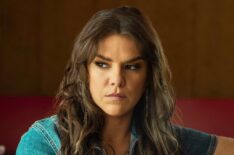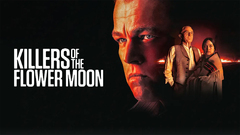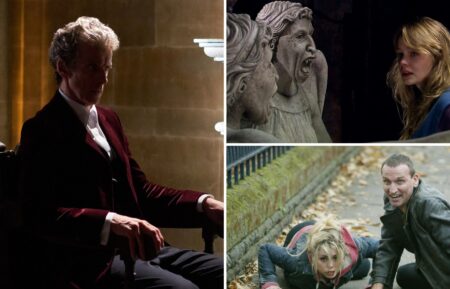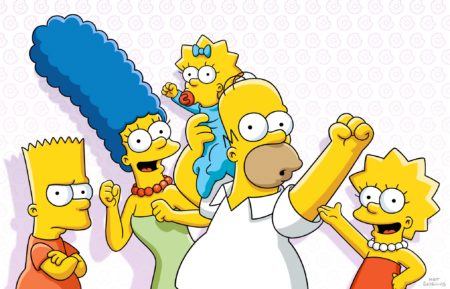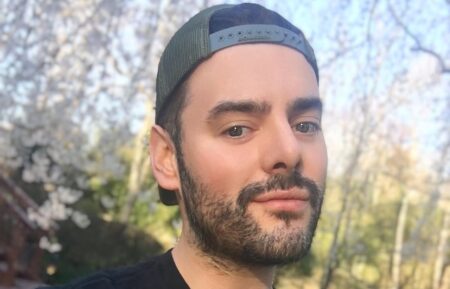‘Killers of the Flower Moon’: Devery Jacobs Reacts to Film’s Portrayal of Violence Against Women
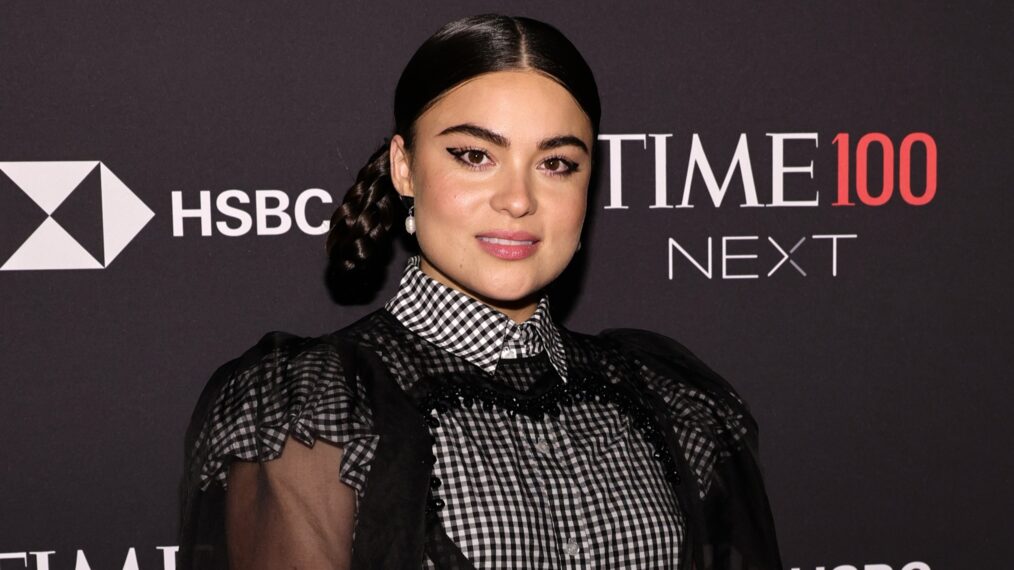
Reservation Dogs star Devery Jacobs is getting candid about her reaction to Martin Scorsese‘s buzzy new flick Killers of the Flower Moon, which examines the Osage murders that occurred in Oklahoma in the 1920s.
The film stars Leonardo DiCaprio and Lily Gladstone as Ernest and Mollie Burkhart, a couple who is drawn together by sinister intentions as Ernest’s uncle William King Hill (Robert De Niro) pushes him to marry a Native American after returning to the States from the Great War. One by one, William, Ernest, and their fellow white Oklahomans begin eliminating the Osage Native Americans with the intent of inheriting their oil-based wealth.
For Mollie, this includes her direct family, primarily her sisters who are targeted without remorse, alongside herself. When the FBI steps in to try and solve these murders, the dark conspiracy is brought to light. Jacobs took to social media about the film. “Being Native, watching this movie was f**king hellfire. Imagine the worst atrocities committed against your ancestors, then having to sit through a movie explicitly filled with them, with the only respite being 30min long scenes of murderous white guys talking about/planning the killings,” she wrote.
I HAVE THOUGHTS. I HAVE STRONG FEELINGS.
This film was painful, grueling, unrelenting and unnecessarily graphic.
A thread. pic.twitter.com/THxucE9TkZ
— Devery Jacobs (@kdeveryjacobs) October 23, 2023
While Jacobs addressed the difficult nature of watching such depictions onscreen, she commended Gladstone (who also featured in Reservation Dogs) and her fellow Native actors: “It must be noted that Lily Gladstone is an absolute legend & carried Mollie with tremendous grace. All the incredible Indigenous actors were the only redeeming factors of this film. Give Lily her goddamn Oscar.”
Although she commended the strong performances, “if you look proportionally, each of the Osage characters felt painfully underwritten, while the white men were given way more courtesy and depth,” she noted.
“Now, I can understand that Martin Scorsese’s technical direction is compelling & seeing $200mil on screen is a sight to behold,” Jacobs continued. “I get the goal of this violence is to add brutal shock value that forces people to understand the real horrors that happened to this community, BUT — I don’t feel that these very real people were shown honor or dignity in the horrific portrayal of their deaths. Contrarily, I believe that by showing more murdered Native women on screen, it normalizes the violence committed against us and further dehumanizes our people.”
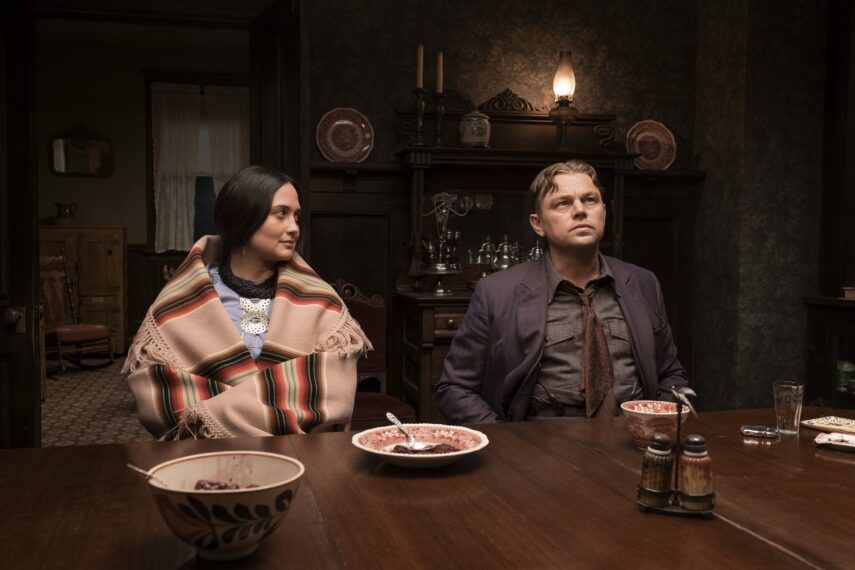
(Credit: Apple TV+)
Jacobs wanted to make it clear that when it comes to Indigenous people, “[we] exist beyond our grief, trauma & atrocities. Our pride for being Native, our languages, cultures, joy & love are way more interesting & humanizing than showing the horrors white men inflicted on us. This is the issue when non-Native directors are given the liberty to tell our stories; they center the white perspective and focus on Native people’s pain.”
In the film, men and women are victims of this plot to steal Osage’s land, oil, and wealth, but as Jacobs points out, the women are brutalized onscreen more than their male counterparts.
Jacobs’ point brings to mind the commentary that surrounded Reservation Dogs‘ final season, which included an episode about Native American boarding schools and the atrocities committed on school grounds against young Indigenous children and their families. It drew comparisons to the boarding school plotline seen in Taylor Sheridan‘s Yellowstone prequel 1923.
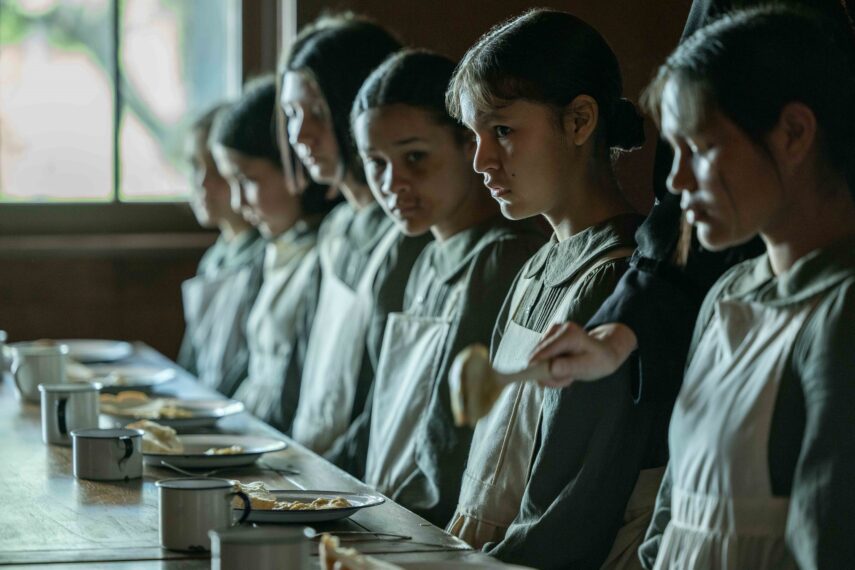
(Credit: Shane Brown/FX)
While 1923 leaned into showing the brutality experienced at the school, the Deer Lady-centric episode of Reservation Dogs used clever and horrifying elements like lack of language understanding and haunting direction to imply the brutality without ever depicting serious violence onscreen. In 1923‘s instance, these Native stories are being told through the lens of a white man, while Reservation Dogs was brought to viewers by Indigenous creators.
Killers of the Flower Moon‘s Gladstone even called out Sheridan’s Yellowstone for its “delusional” and “deplorable” version of the American West.
While she may take issue with certain depictions, Jacobs acknowledged “how cathartic it is to have these stories and histories finally acknowledged, especially on such a prestigious platform like this film. There was beautiful work done by so many Wazhazhe on this film.” Still, Jacobs would prefer to see that $200 million budget Scorsese was given to an Osage filmmaker to share this history.
The actress also acknowledged the real-life victims of the tragic events depicted onscreen as she noted, “The pain is real & isn’t limited to the film’s 3hrs and 26 mins.”
Ultimately, she summed up her thoughts on the film by posing the question, “Is this really the representation we needed?”

